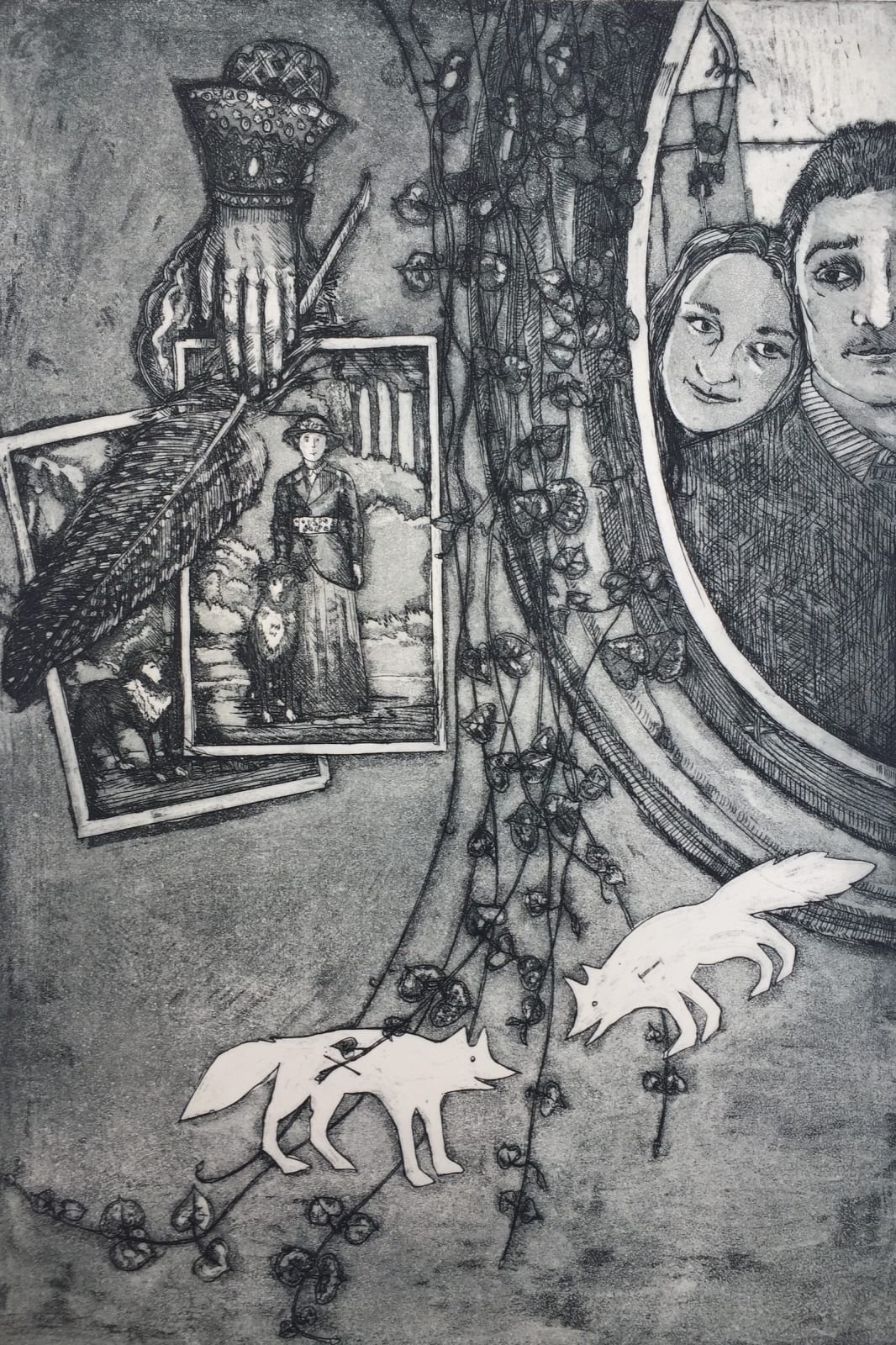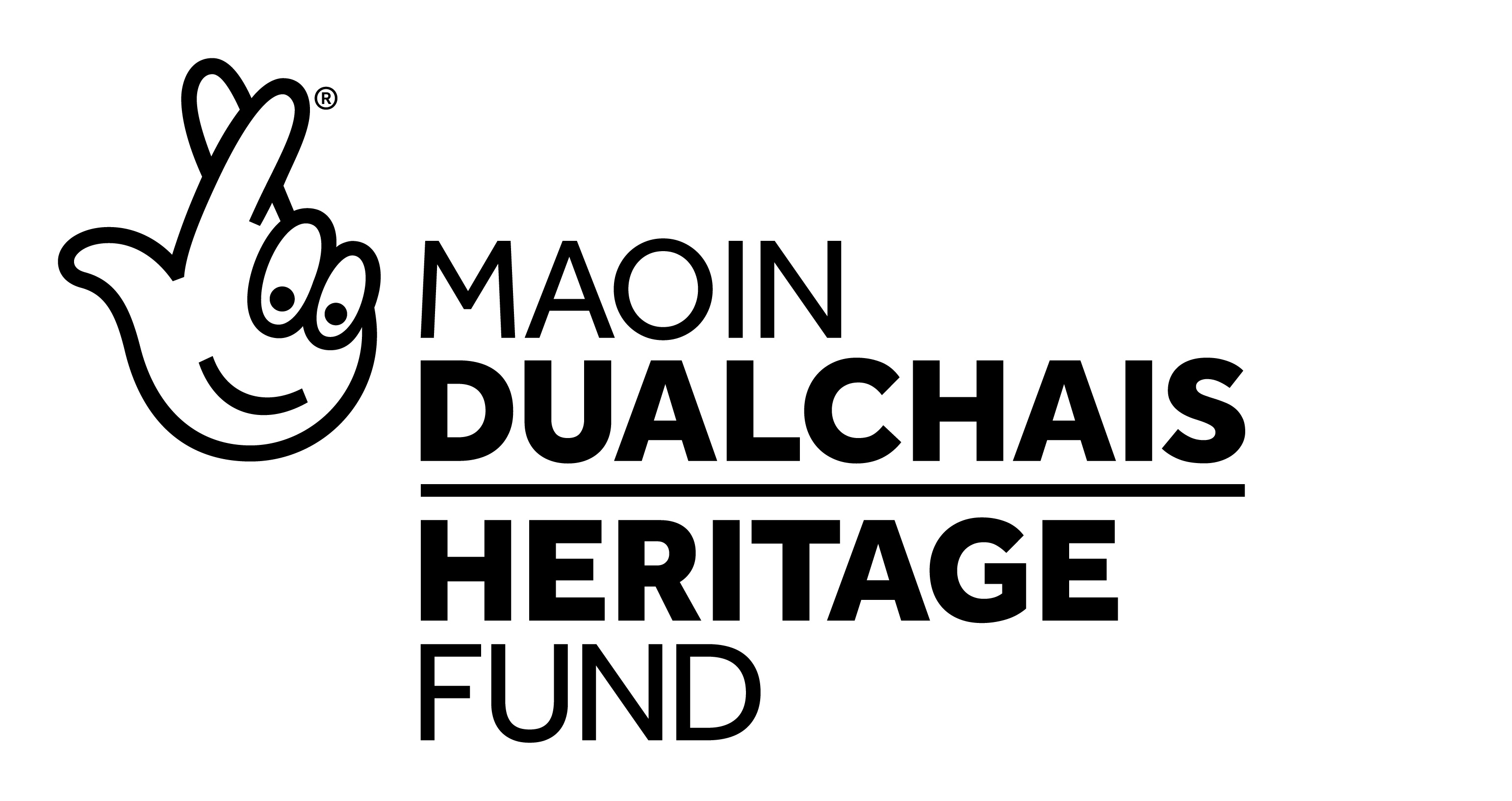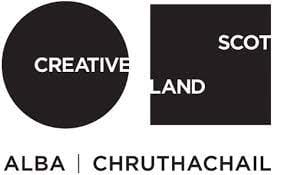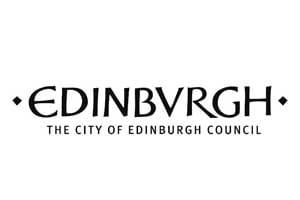What first brought you to Edinburgh Printmakers?
Whilst I was at Edinburgh College of Art studying for my MA Fine Art (Hons) I was brought to Edinburgh Printmakers Workshop in Union Street by one of my tutors, Victoria Crowe, who encouraged me to do a course and join after graduation, which was the obvious next step for me after loving making etchings at the ECA studios down in Inverleith. There I was taught by John Mooney, who was a really great tutor and very encouraging.
How did you first get into printmaking?
I first discovered etching at York College of Art, where I did my Foundation year before going to ECA. I first made tiny little plates of toy animals, including foxes which would continue to feature in my work.
Intaglio etching is a key part of your practice. What first drew you to this printmaking process and what do you like about it?
I think above all I love line and detail, and etching suits how I draw and lets me include tiny details of objects and plant forms. The process and reveal of a new etching plate is always exciting, and although lots can go wrong I’ve been making etchings so long now I feel I very tuned in to the process.
Foxes are a recurring symbol in your work. What do they mean to you?
My degree show etchings and paintings were full of dogs, but after graduation the foxes crept in and sort of took over! They represent something wilder and more unpredictable, and are my artistic spirit and essence I suppose. The fox in my work is called Reynard, and is both a companion in my work and a completely separate character with his own plans.
What is your artistic research process? How are you inspired by stories and how do you find them?
I am a huge believer in sketchbooks and have a particular way of working that includes adding beautiful scraps of collage paper to my small pocket sketchbook before going drawing in museums, the garden, or at home. I find layering fineliner, watercolour and ink on top of collage very beautiful and the pages of my sketchbooks then become the basis of etchings at some later date, or at least parts of them. I collect 18th and 19th century paper ephemera, like old Valentines, Christmas ornaments , ceramics and toys, as well as old love tokens with stories layered in them, and things that I then put together to tell new stories. I like to layer symbolism and scraps of text to add to this, although very personal they work on a broader scale I hope, as emblems of positivity and encouragement.
What other artists are you inspired by?
When I was on my foundation I wrote to Paula Rego and John Kirby and wonderfully they both wrote back the most eloquent and interesting letters, and these artists have always been close to my heart. I also really love Marc Chaghall and Max Ernst. When I was little girl I just wanted to be Beatrix Potter, but I would also say Peter Firmin, the co-creator of Bagpuss is also a huge delight to me. I once got to talk to him over the phone and told him how much I love the way he drew the mice from Bagpuss, a very special moment.
You also teach others how to make things. How does this inspire your artistic practice?
In my work for various galleries I have to learn all about each new exhibition then often devise workshops and describe works for visually impaired people. This means I’m always thinking ahead and learning new things. Being up close up to artworks and talking about them with people really helps you understand them and I love enabling people to create their own responses to exhibitions. Over the years I have come to know what sort of activities will be enjoyable or challenging and will help people to explore each exhibition, it really all feeds into my own work too, as I’m being stimulated by exposure to so many compositions, paint effects, techniques and stories that all fill my creative ideas bank for later on.
What’s next for your printmaking practice?
Many of my current etchings feature hands holding flowers, and are full of the symbolism of those flowers, as well as love tokens and the way in which we hold onto meaning and joy. I think I’m happiest with my work when it embodies the optimism and qualities of my sketchbooks, that are layered with meaning and messages. My latest etching is called 'You Were In The Garden All Along’ and has a face crowned by gardening items and an Edwardian Gardener called Violet Biddle, whose beautiful book inspired the print. I’m sure my work will continue to involve living things, plants, foxes and flowers, alongside the beautiful tokens of love I collect to make up my very personal works of hope and optimism.
Please check out Tessa's website for more information: Tessa Asquith-Lamb









